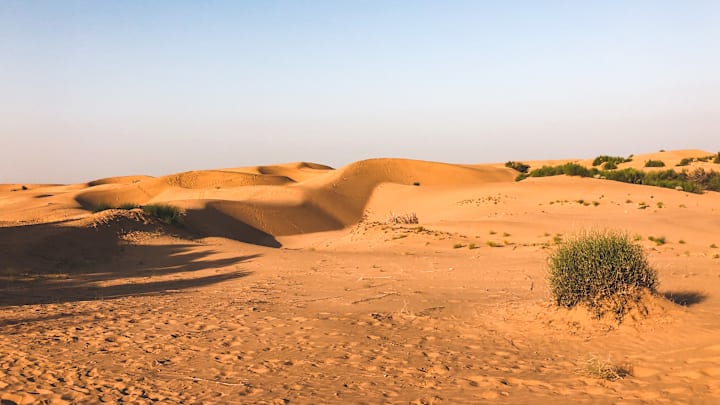Climate change has had a far-reaching impact on the environment, from increased pathogens found in polar bears to higher levels of seafood contamination. Though its effects are overwhelmingly negative for humans, a new study suggests it’s also partially responsible for making one desert greener and more habitable.
As Live Science reports, research published in the journal Cell Reports Sustainability shows that the Thar Desert (a.k.a. the Great Indian Desert) in northwestern India and southeastern Pakistan looks less like a desert than it did 20 years ago. A team of scientists based in the U.S. and India examined satellite data and determined that the area became 38 percent greener on average from 2001 to 2023.
To understand how this happened, the team analyzed human and climate activity within the region during this period. They found that the desert experienced a 64 percent increase in monsoon precipitation during the summer, leading them to conclude that it was the primary driver of the change. Another factor is the addition of irrigation infrastructure, which uses surfaced groundwater for agricultural purposes outside the rainy season.
Increased accessibility to water and energy has made the desert more urbanized and agriculturally focused. Because of these changes, the desert now has more than 16 million residents—more than any other desert in the world.
However, higher temperatures can still put the residents of the Thar Desert at risk. On top of that, the over-pumping of groundwater for irrigation can make resources run out quickly. The researchers note that the only way to slow down resource depletion is to use water sustainably (i.e., planting drought-resistant crops, using renewable energy, etc.).
The human population of the Thar Desert is poised to flourish if residents can continue to adapt. Still, the authors mention the need to protect desert-adapted species and nomadic farming customs as the region develops.
Read More About the Environment:
